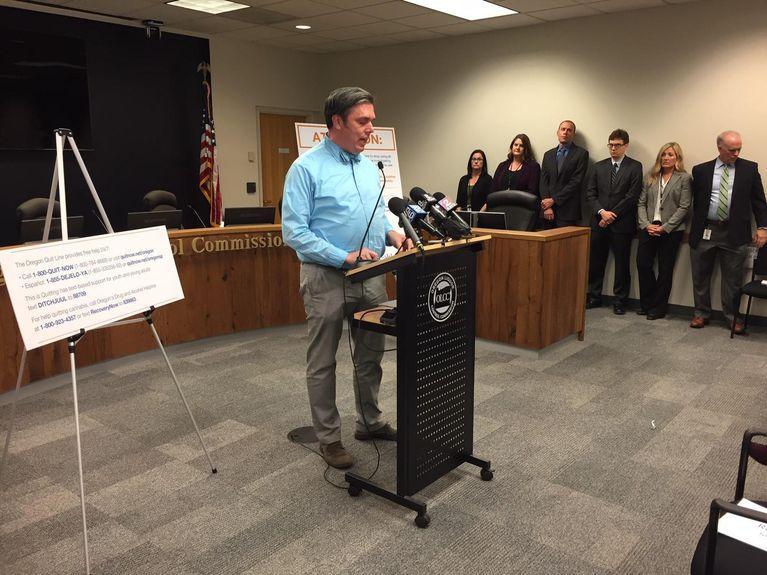
Oregon Health Authority officials don’t anticipate statewide mask mandates or other restrictions at this point in the COVID-19 pandemic.
Instead, they are recommending that Oregonians consider their own health – and make their own decisions. It’s a shift from the statewide mandates Oregonians have shouldered throughout the two-year pandemic.
The light-handed approach reflects a new reality for now: Oregon officials don’t expect the current wave of COVID-19 cases to overwhelm hospitals. Beyond that, the variants now dominant in Oregon don’t as frequently lead to hospitalization or death.
At the same time, some local public health officials are taking a stronger stance. Multnomah County, for example, last week encouraged everyone to mask up while in indoor public places. That county is one of six that are considered at medium risk due to a rise in cases.
Multnomah County’s recommendation is not a harbinger of statewide mandates.
“I think we will make it through this current peak without having to take more measures that are mandates across the state,” Dr. Dean Sidelinger, the state epidemiologist, said in a Wednesday press briefing. “I think individuals can assess their own risks, their own health conditions, who they live with and whether they’re older adults who are immunocompromised.”
The state’s hands-off approach marks a shift from the early days of the pandemic, when Oregon limited in-person gatherings and forced restaurants and other public venues to curtail or reduce services.
Officials say people can look at the activities they are planning and participating in and decide whether to move them outside to reduce the risk of transmission or postpone them until the risk drops.
Meanwhile, state health officials are keeping an eye on variants of COVID-19, yet not expecting overwhelmed hospitals. Calling it a “stubborn adversary,” Sidelinger said Omicron variant BA.2 is “highly transmissible and widespread statewide” like its predecessor, the Omicron variant BA.1.
“Unfortunately, these developments tell us that the pandemic is not over,” Sidelinger said, citing the rise in new cases and hospitalizations.
In the last four weeks, test positivity has risen from 7% on April 20 to 11.4% on May 16, the health authority said. In that time, daily reported case counts more than doubled, from a rolling seven-day average of 600 cases a day on April 20, to 1,350 reported on May 16.
Hospitalizations have nearly doubled, from 110 to 251 COVID-19-positive patients, Sidelinger said.
Oregon Health & Science University modeling projects that the number of COVID-19-positive patients in Oregon’s hospitals will peak at 321 around June 10. However, that’s less than a third of the figure Oregon experienced during the Delta and Omicron waves, Sidelinger said. In those surges, Oregon had peaks of 1,178 on Sept. 1 and 1,130 patients on Jan. 27, respectively.
“We’re not at a place where I think the cases we’re seeing will lead to such an increase in hospitalizations that we’re going to see limits on our hospital partners to care for all the patients that show up with COVID or with other conditions, so we really do encourage people to assess their own risk,” Sidelinger said.
Statewide, the state still recommends masks in certain situations.
Sidelinger said: “Right now, we don’t recommend that everyone wear masks indoors places, but if you are not vaccinated, if you are an older individual, if you have underlying conditions that put you at higher risk such as lung disease or heart disease, diabetes, or if you are immunocompromised and the vaccines you have might not work as well or you live with or care for someone in those categories, I would encourage you to continue to wear masks in indoor public places.”
Sidelinger also noted that Oregonians should be more cautious in counties that have a higher risk of transmission, including Multomah.
“All individuals should consider potentially putting on a mask (there),” he said.
You can reach Ben Botkin at [email protected] or via Twitter @BenBotkin1.
